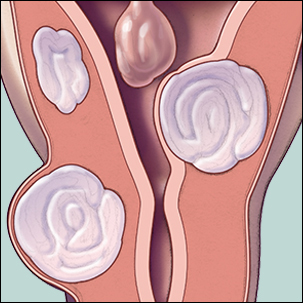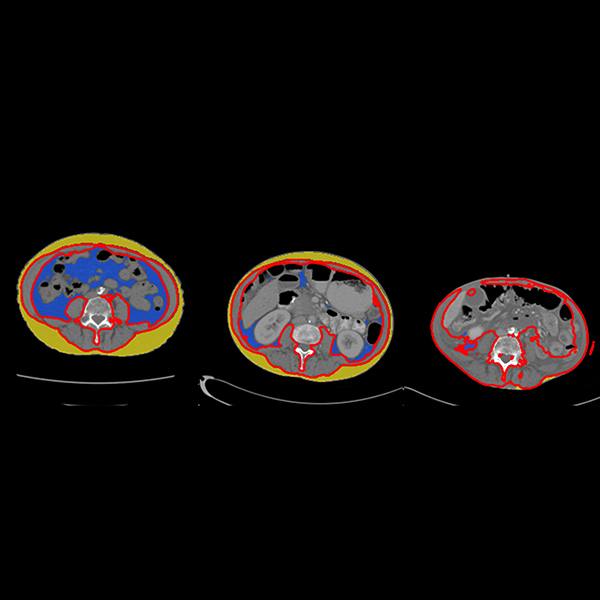-
Research
Science Saturday: Building a scientific collaborative space
 Combining innovative Mayo Clinic labs with medical businesses and creative start-up companies will help Rochester — and benefit patients.
Combining innovative Mayo Clinic labs with medical businesses and creative start-up companies will help Rochester — and benefit patients.
Outside his office in the Destination Medical Center Economic Development Agency, Chris Schad leans over a model of downtown Rochester, Minn. He traces out Discovery Square -- the 16-block area south of the main Mayo Clinic campus that is becoming an innovation and business hub.
Wiry and bespectacled, Schad points to 3-D printed models of modern medical buildings, such as the Minnesota BioBusiness Center, as well as One Discovery Square, a gleaming glass and steel four-story project with expansive common collaboration space that Mortenson, the Minnesota-based real-estate developer, is erecting.
Schad, director of business development for Discovery Square, predicts the district will ultimately be occupied by more Mayo labs and associated high-tech medical companies.
“I think just five years from now it’s going to look radically different,” he says.
The Discovery Square redevelopment district, about 30 percent of which is owned by Mayo Clinic, is envisioned to do a couple of things: First, to accommodate in some planned fashion the residential and commercial growth expected in Rochester in the next couple of decades. And second, to translate the medical and commercial innovations coming out of Mayo Clinic into commercial medical developments that benefit the Rochester economy and Mayo’s patients.
“It adds to the diversification of our economy. And it attracts investment dollars into Rochester,” says Schad. “So as an economic engine, you can take that innovation that is coming out of Mayo and spin that into companies that stay here in Rochester and grow here in Rochester.”
Discovery Square grew out of Destination Medical Center, a $5.6 billion public-private investment in downtown Rochester approved by the Legislature in 2013 to plan ahead for predicted city growth driven by the growth of Mayo Clinic.
“It’s essentially a public investment in the city of Rochester to support the growth that Rochester and the region will be seeing in the next 20 years,” says Schad. Rochester, a city of 114,000, is expected to gain up to 30,000 new jobs.
Mayo’s executive dean for research sees Discovery Square as far more than an expansion of lab space. Gregory Gores, M.D., says it’s part of a long-term vision for external cooperation.
“Every time Mayo has taken its science and medicine to a higher level it’s involved both innovation and collaboration. By thinking collectively, combining skills and resources, and working together we can translate better, more effective therapies into the mainstream and to more patients. We want to work with organizations in a spirit of team science to meet the unmet needs of patients everywhere.”
The key to Discovery Square’s success is attracting medical technology companies—whether spun off from Mayo discoveries or developed elsewhere—seeking close proximity to Mayo’s scientists and clinics.
“The number one question I get is what kind of access will I have to Mayo Clinic? What access to intellectual property? To key opinion leaders—physicians, researchers, surgeons?” says Schad. He says he can’t guarantee that a company in Discovery Square will be able to have a meeting with the chair of surgery, neurology, or cardiovascular medicine. “But I can ensure that they’re traveling in the same circles, put them in proximity—orchestrated serendipity,” he says. “You want to ensure that people bump into each other by giving them a compelling reason to come together in the same space.”
James Rogers, III, chair of Mayo Clinic Ventures, the unit in charge of commercializing Mayo discoveries, predicts that Discovery Square will produce “tremendous benefit” by attracting technology companies to the Mayo orbit.
“Having employees of companies not just visit our campus periodically but live and be vested in this community, coupled with the ability to collaborate across not only Mayo but with the other partners in Discovery Square, large and small, should lead to deeper and more productive relationships,” says Rogers.
The flagship of the district is One Discovery Square, a gleaming glass building of 89,000 square feet. Construction crews are finishing the space, and tenants will move in early next year.
The first are three Mayo Clinic research areas — advanced diagnostics, advanced manufacturing of regenerative products, and advanced biomedical imaging.

William Morice, M.D., Ph.D., head of Mayo Medical Labs and Mayo’s laboratory medicine and pathology, will move a portion of his organization to the new Discovery Square building to advance new diagnostic tests. One technology, for example, can examine thousands of genes in a single patient specimen. Another will translate pathology biopsy samples into digital images for easier storage, sharing, and analysis.
Moving the experimental diagnostic technology to Discovery Square provides distance from the day-to-day demands of the department, which performs more than 25 million tests a year. Mayo will also use the space to collaborate with outside groups on new medical tests. “The intent of the building, of course, is to be kind of a creative collision spot for Mayo Clinic’s existing practice and discovery with outside companies,” Dr. Morice says. “It’s good for them, too, because it creates for them a better go-to-market product.”
Also moving to One Discovery Square is Mayo’s Facility for Advanced Regenerative Manufacturing, which aims to develop therapeutic products that will encourage human cells, tissues and organs to repair themselves. The goal is to make parts of the body heal themselves and, in some cases, avoid the need for organ transplants. Among the products will be cellular-sized capsules that can carry payloads to perform biologic and chemical functions, and agents to deliver therapies into target tissues.

The move will consolidate technologies built in different labs at Mayo and help boost manufacturing quality, says cardiologist and researcher Atta Behfar, M.D., Ph.D., director of the Van Cleve Cardiac Regenerative Program and deputy director of translation for Regenerative Medicine within Mayo’s Center for Regenerative Medicine.
“Centralizing the manufacture of these next-generation biotherapies ensures that we will be offering our patients treatments developed with the highest standards.”
The Discovery Square setting also promises to enable collaboration with companies involved in similar technologies. Mayo Clinic, Dr. Behfar says, has “a keen interest in instituting industry partnerships both from the standpoint of establishing ourselves as a unique biologics manufacturing center and to gain new insights into novel approaches and novel technology that we can then in turn offer to our patients.”

Finally, Mayo radiology researcher Matthew Callstrom, M.D., Ph.D., will be moving experimental imaging technologies into the new Discovery Square building, including ultrasound research and artificial intelligence (machine learning) technology. Machine learning uses computers to analyze and interpret imaging in a way that potentially is more objective and comprehensive than scanning by the human eye. An error in measuring the size of a tumor, for example, can spell the difference in deciding whether a treatment is effective or not.
The lab will also collaborate with a researcher from Barrow Neurological Institute in Phoenix who works with the MRI manufacturer Philips. “The development of new technologies, whether it be an imaging platform or therapies, requires basically a clinical perspective, what the need is, where the opportunity might be, and an industry partner that can build it in a way that is sustainable,” says Dr. Callstrom. “That industry partnership is critical to being able to make those next steps.”
The move to Discovery Square, with its mix of Mayo labs, business collaborators and university students, is “a real exciting opportunity to more rapidly develop solutions, to take things that have been discovered, that we know are promising, and then really to deliver that care to patients,” says Dr. Callstrom.
“Market forces will tell us if there is demand for a second and third building on that block, and then building on another block or another block,” says Schad.
Concentrating commercial medical development, intermixed with innovative Mayo Clinic labs, will make for a more productive campus, a more livable city, and in the long run, better patient care.
“Getting new innovation, new technologies out to the market faster or sooner is a good thing, whether its Mayo’s technology or somebody else’s technology,” says Schad. The result, he says, will be better care, lower cost, and higher value in medical care. “It’s a good thing, not only for Mayo Clinic, it’s good business. But it’s best for the patient.”
- Greg Breining, June 2018







